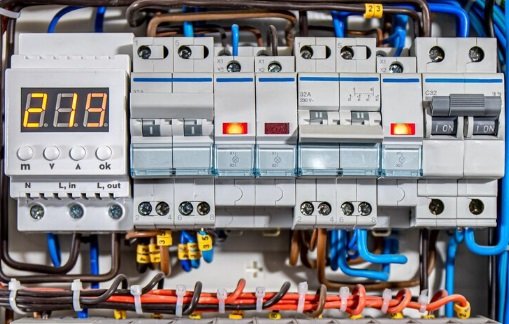Shop for top-notch⚡Electric Meter Parts! Our premium-quality pieces ensure accurate and efficient power measurement 🔌💡- a perfect upgrade!
Efficient power measurement is crucial for ensuring energy conservation, reducing costs, and optimizing performance in various systems. Accurate metrics help identify wastage, improve sustainability efforts, and maintain regulatory compliance, making it vital for businesses and industries aiming for operational excellence.
An electric meter is a crucial device found in virtually every residential, commercial, and industrial property, serving as the nexus for monitoring electricity consumption. Its primary function is to measure the amount of electrical energy used by a building or machine over time, helping utility companies generate accurate billing and enabling users to understand their energy usage patterns. Understanding the various parts that make up an electric meter can offer valuable insight into how these devices operate and ensure precise measurements. From the external casing that protects internal components such as measuring mechanisms and display units, each part plays a specific role in ensuring efficiency and reliability. This exploration delves into these critical components, shedding light on how they work together seamlessly to perform this essential task. Click the link to find out more: https://ph.rs-online.com/web/c/automation-control-gear/process-control/energy-meters/.
Understanding Electric Meters
Electric meters measure electricity consumption by recording the amount of electrical energy used over time. They monitor kilowatt-hours (kWh), displaying usage data for billing purposes. Meters use sensors to track electric flow and calculate accurate readings for residential or commercial environments.
Electric meters are crucial for accurately measuring power consumption, ensuring fair billing and efficient energy use. They provide real-time feedback that helps monitor usage patterns, identify inefficiencies, and optimize electricity consumption—key to managing both residential and commercial power demands effectively.
Characteristics of Premium Quality Electric Meter Parts
High-quality electric meter parts are characterized by their durability, precision, and reliability. These components ensure accurate measurement of electrical usage, withstand harsh environments, and often include advanced technology for enhanced performance. They integrate seamlessly into systems, providing critical data for efficient energy management.
These attributes ensure precise and rapid power assessments by enhancing data accuracy, minimizing errors, and facilitating real-time monitoring. Their integration streamlines the measurement process, reduces energy waste, and optimizes system performance for both residential and industrial applications.
Types of Premium Quality Electric Meter Parts
High-end electric meters comprise components such as precision current sensors, advanced voltage measurement circuits, microcontrollers for data processing, communication modules for real-time monitoring, LCDs for easy reading, and robust enclosures ensuring durability and resistance to environmental factors.
Each component’s role is detailed for clarity: the processor handles tasks, memory stores data, and storage retains files. Input devices like keyboards communicate commands, while output parts such as screens display results. Power supplies ensure operation; cooling systems prevent overheating.
The Role of Quality in Electric Meter Parts
Premium quality components significantly extend the lifespan of electric meters by enhancing their reliability and precision. These superior parts resist wear, reduce maintenance needs, and ensure sustained performance under various conditions, ultimately delivering long-lasting service and minimizing total operational costs for users.
The effectiveness and efficiency of power measurement greatly depend on the quality of the parts used. High-quality components minimize errors and improve accuracy, ensuring reliable performance. Consequently, investing in superior parts can lead to more precise measurements and enhanced system reliability.
Maintenance Tips for Premium Quality Electric Meter Parts
To ensure the longevity of high-quality parts, follow these guidelines: perform regular maintenance, use appropriate cleaning agents, avoid harsh environmental conditions, store in a suitable environment, and adhere to manufacturer recommendations. Proper care will help maintain optimal performance and extend lifespan.
Frequent inspections and regular upkeep are crucial for ensuring optimal performance and longevity. Routine checks help identify potential issues early, allowing timely interventions. Consistent maintenance minimizes risks, enhances reliability, and promotes efficiency in various systems or equipment, safeguarding overall functionality.
The Price versus Quality Debate
A comparative study examines the cost differences between premium-quality electric meter components and their lower-grade alternatives, highlighting how superior materials affect pricing. It emphasizes long-term benefits such as durability and efficiency, potentially offsetting initial higher expenses through enhanced performance and lifespan.
Investing in premium quality parts yields long-term benefits by enhancing the overall performance and reliability of machinery. Superior components reduce maintenance costs, minimize downtime, and extend lifespan, ultimately leading to greater efficiency and higher return on investment over time.
Making the Right Choices
When selecting electric meter components, prioritize quality and compatibility. Check for industry standards and certifications to ensure reliability and safety. Consult product reviews and expert opinions, comparing prices without compromising on performance to make an informed decision for long-term efficiency.
Prominent and trustworthy manufacturers are often highlighted in industry discussions. These notable companies are recognized for their consistent quality and reliability, serving as benchmarks for excellence within the market. Their reputation instils confidence among consumers and sets high standards for competitors.

FAQs
What are the parts of an electrical meter?
An electrical meter comprises the following parts: a display to show readings, terminals for connection to the circuit, a measuring mechanism (such as coils or sensors), calibration knobs for accuracy adjustments, and a protective casing that houses all components securely.
What are the components of an electric energy meter?
An electric energy meter comprises several key components including the current and voltage coils, a rotating aluminium disk, permanent magnets for braking, a register to display readings, and calibration mechanisms. These parts work together to measure and record electricity consumption accurately.
What are the parts of an electricity smart meter?
An electricity smart meter includes several components: a digital display to show usage, data storage for tracking consumption, communication modules to send data to the utility company, sensors for accurate readings, and a power supply ensuring continuous operation.
How much to replace an electric meter socket?
The cost to replace an electric meter socket varies widely, typically ranging from $100 to $600. Factors influencing price include labour rates, equipment costs, and local regulations. Always consult a licensed electrician for accurate estimates tailored to your specific situation.










